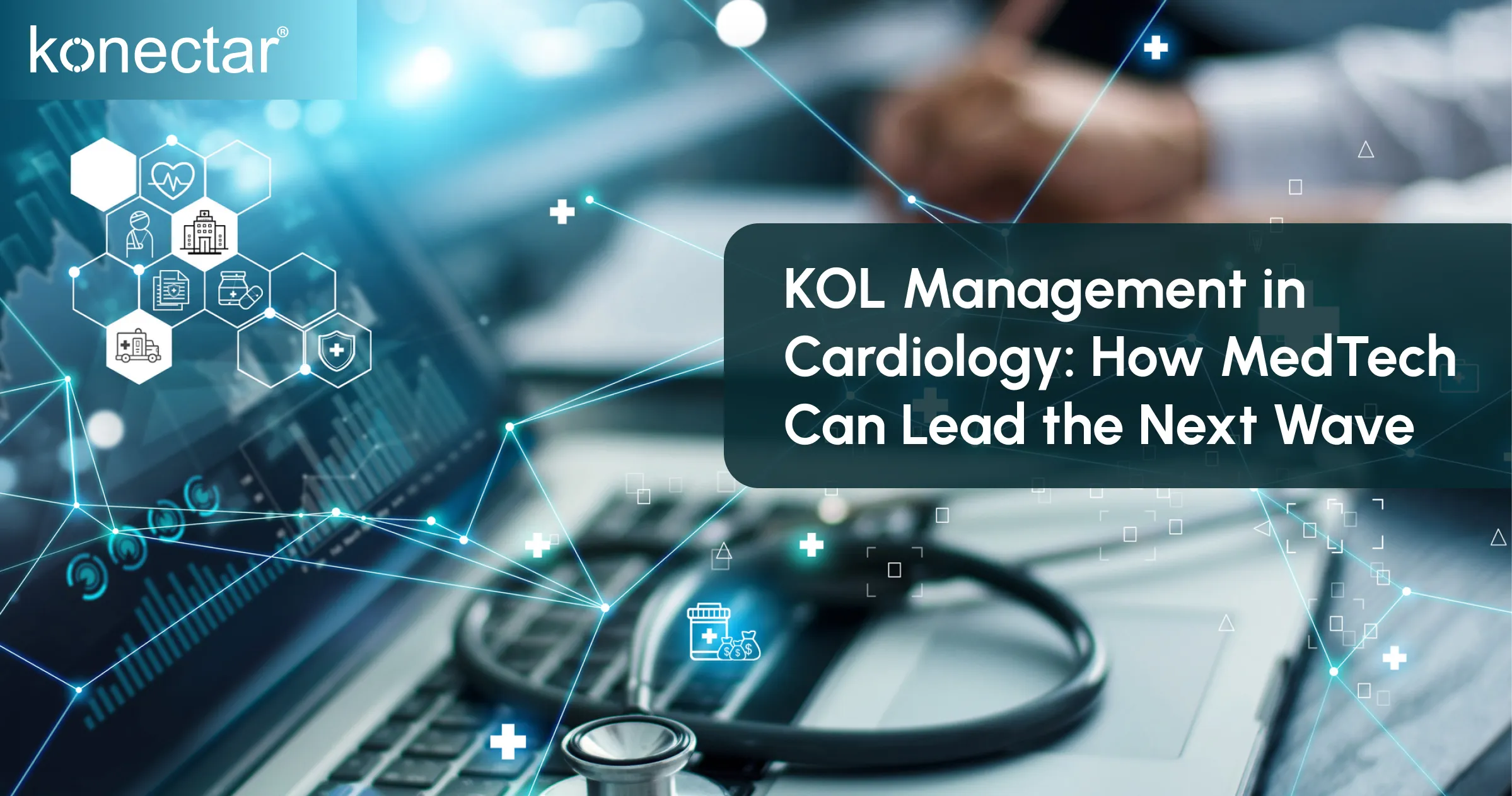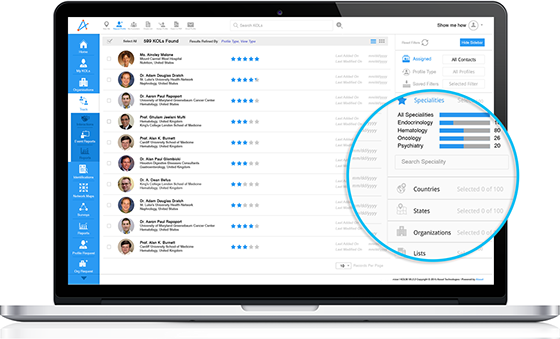13-11-2025
KOL Management in Cardiology: How MedTech Can Lead the Next Wave

MedTech’s approach to Key Opinion Leader (KOL) management is now at an inflection point. For decades, the dominant model operated on a transactional premise: identifying influential experts, engaging them, and leveraging their credibility to amplify device adoption and brand presence.
This paradigm, as effective as it was, is now misaligned with the realities and expectations of the modern healthcare ecosystem. The traditional model of KOL relationships had one faulty assumption at its core: it assumed a relatively linear pathway of influence. MedTech teams identified the opinion leader, who then disseminated information to their peers, ultimately shaping device selection. The limitations of this model are now more apparent as the healthcare system has become more complex and interconnected.
Today, leading organizations are approaching this differently; instead of treating KOLs as external endorsers, they are integrating thought leaders as partners throughout the innovation lifecycle—from early device development to clinical design. This ecosystem is based on the recognition that meaningful technological advancement and device adoption occur through sustained collaboration rather than unidirectional communication.
In This Article:
- AI-Driven Intelligence & Predictive Engagement
- A Framework for Measuring Impact in the Value-Based Era
- The Future State: Leading as Ecosystem Orchestrator
- Final Words
- FAQs
This approach acknowledges several other critical realities of the modern healthcare ecosystem:
- Clinical decision-making is multi-disciplinary, with interventional cardiologists collaborating with cardiac surgeons, imaging specialists, and lab specialists.
- The pace of technological innovation has accelerated in the past few decades, requiring continuous rather than episodic engagement to stay at the forefront of emerging trends.
- External stakeholders now expect real-world value rather than efficacy data alone.
MedTech teams that lead in the next decade are those that merge diverse expertise to facilitate collaboration and enable thought leaders to drive technological advancement and improve patient outcomes.
AI-Driven Intelligence & Predictive Engagement
Moving beyond traditional KOL engagement to partnership requires new intelligence tools. The old model tracked thought leaders through yearly publication counts and historical metrics. This new approach needs real-time predictions and flexible segmentation that adapts as relationships evolve.
Advancements in AI make this possible, helping MedTech teams spot trends early, build relationships proactively, and engage meaningfully across the network.
AI algorithms can now track cardiovascular device discourse across conferences, registries, trials, and professional social platforms in real-time. Sentiment analysis detects how thought leaders' perspectives change as new device data is published. Predictive algorithms spot rising voices early, before competitors do, by analyzing publication patterns and collaboration networks.
Organizations mastering technology for these purposes can allocate resources optimally and create a compounding advantage.
A Framework for Measuring Impact in the Value-Based Era
The transition from volume-based to value-based care requires a shift in how medical technology organizations measure success. The new imperative is to demonstrate a tangible impact on patient outcomes and the broader healthcare ecosystem.
Beyond Reach: Quantifying Influence on Clinical Practice
The new standard of measurement comes from tracking activity to tracking behavior. This means demonstrating a causal link between scientific exchange and subsequent changes in real-world clinical practice.
Social Network Analysis: Mapping the “Ripple Effect”
As mentioned earlier, influence is no longer linear; it's a network effect. By analyzing data on co-authorships and digital discourse, social network analysis (SNA) can quantify the ripple effect by measuring how engagement with a primary expert (first degree) disseminates to their direct collaborator (second degree) and, subsequently, to the broader clinical community (third degree).
This can demonstrate the actual value of strategic engagement. SNA is also crucial for identifying efficient nodes for engagement initiatives. These “key connectors” are not always high-profile experts, but rather individuals who bridge disparate clinical and research groups.
Redefining ROI: From Tactical Partnerships to Long-Term Value
The concept of measurable ROI must transcend commercial metrics and sales volume. The focus must shift to quantifying strategic value. Measuring long-term value includes tracking metrics for reduced time-to-adoption of a novel device technology and enhanced brand credibility.
The Future State: Leading as Ecosystem Orchestrator
The future state of MedTech is not one of control, but of facilitation—one that connects disparate nodes of influential figures and builds a trusted platform where value can be co-created.
Curating Multi-Disciplinary Expert Communities
The orchestrator’s role is to look beyond a single specialty to actively build forums that connect all stakeholders in a complex patient journey. In cardiovascular disease, this means fostering collaboration among interventional cardiologists, cardiac surgeons, and specialists. The goal is to create a holistic dialogue on the integrated care pathway.
Facilitating Peer-to-Peer Learning
True orchestration involves providing platforms and resources that enable experts to engage with one another. This requires establishing trust where the community can debate emerging evidence, challenge existing protocols, and develop consensus on best practices.
Final Words
The shift from a linear, transactional model to an “ecosystem orchestrator” is more than a semantic change; it's an operational shift that reflects the evolving nature of medical technology innovation and adoption.
As we’ve outlined, this transformation is underpinned by three critical pillars:
- Embracing a new philosophy of partnership that integrates KOLs throughout the device lifecycle.
- Adopting new technologies, leveraging AI-driven intelligence to navigate and predict the complex, multi-disciplinary network.
- Committing to new metrics and moving beyond reach to quantifying real-world impact on practice.
FAQs
- What is the difference between traditional KOL management and the “ecosystem orchestrator” model?
Traditional management was linear and focused on individual experts to amplify brand adoption. The “ecosystem orchestrator” approach is facilitative and collaborative, building a trusted, multi-disciplinary platform where experts can engage in peer-to-peer dialogues and co-create value.
- Why is the traditional model of influence no longer sufficient in a complex therapeutic area like cardiology?
The traditional model’s transactional assumption is outdated. Cardiology care is highly multi-disciplinary, technology is accelerating, and stakeholders demand real-world value, not just efficacy data.
- How does AI-driven intelligence move beyond simple KOL identification and “tiering”?
Instead of relying on historical metrics, AI provides real-time insights. It helps spot rising experts and innovators before they become widely known, analyzes changes in sentiment around new technologies, and understands evolving collaboration networks.





